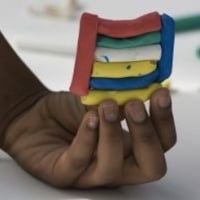Teamwork and Creativity: Making Them Work Together

Collaboration is a key part of how agile teams work. Quite often, to work effectively to meet commitments in a self-organizing, cross-functional team, you need to be creative as well. While teams can be creative, team creativity doesn’t just happen. The relationship between teamwork and creativity is complicated, and by understanding it you can be more effective as a team.
Organizations, agile and not, try to encourage creative thinking. Some of the techniques teams use include improvisation and brainstorming. But what is creativity, and do we really understand how to encourage it?
In an interview with Krista Tippett during an episode of the radio show On Being, scientist Rex Jung defined creativity as a process that gives rise to things that are both novel and useful. Jung explained that some of the attributes that correlate with creativity are also attributes that will facilitate team work—for example, humor.
Many take it for granted that brainstorming encourages creativity. Tippet and Jung discussed an article in the New Yorker that explains why brainstorming doesn’t actually work. Creativity is a group process, but brainstorming, because it doesn’t allow criticism, doesn’t generate as many ideas as people working alone.
While creativity “can thrive on conflict” (if it is constructive), there also needs to be some level of comfort among the group. The New Yorker article discusses a study that showed that “The best Broadway shows were produced by networks with an intermediate level of social intimacy.”
What this means for a team is that the people need to understand how to have constructive conflict. As Ellen Gottesdiener explains, trust enables collaboration, so it is important to establish a group dynamic where people can disagree yet understand that there is an underlying trust.
Spaces that allow for cross-functional collaboration help make it possible for creative solutions to be discovered. Even using physical dashboards can enhance interactions and lead to insights.
Remember that an office layout that facilitates productivity isn’t a new discovery. Thomas Allen is a pioneer on the effects of office space on collaboration. Beki Grinter researched the role of distance on the productivity of geographically distributed teams in the late 1990s. Agile teams have the advantage of having a product owner in the room, but sometimes interactions with people from the organization may lead to useful insights.
You also need time to be creative in order to make a good work dynamic for the team and give team members space that allows for impromptu interactions. Agile practices like maintaining a sustainable pace and having reviews and retrospectives play an important role in helping a team find ways to improve.
Effective creative collaboration can help an agile team be more productive; don’t assume that an environment that enables the right interactions will happen on its own.
Does brainstorming work well with your team, or does it lead to groupthink? What is keeping your team from finding creative solutions? Let us know in the comments below.


You described the importance of good management of a team throughout this article. Such achievements could be a dream to come true if the whole process is done without any specific target to get completed. Any work or project needs the hard work of the entire team to be successful and to show its full potential outcomes. I am glad that your team is collaborative in this way.